Sebastian Errazuriz headlines a trio of solo art and design shows in the US
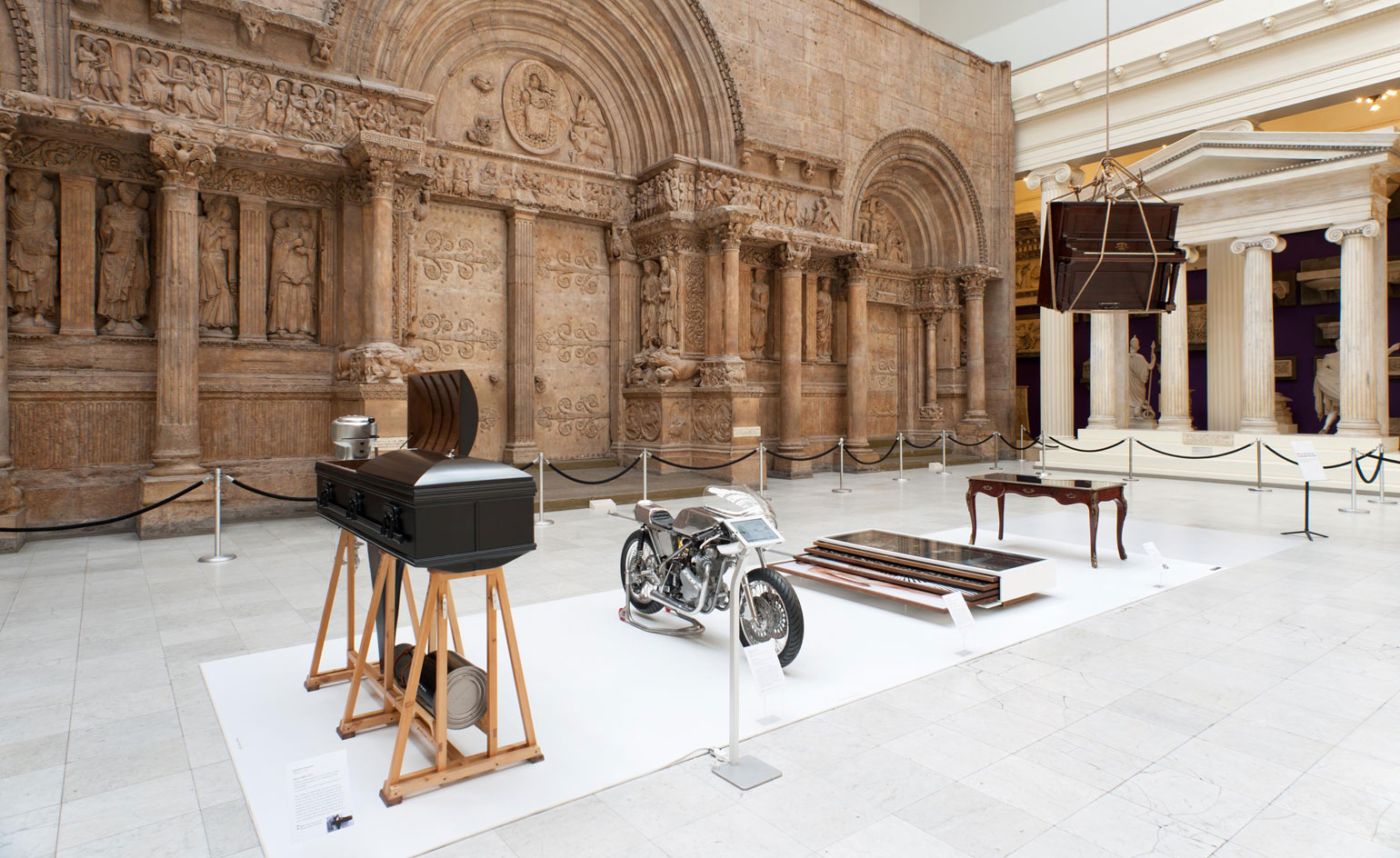
Chilean-born, New York-based Sebastian Errazuriz is having a bumper September as the subject of three gallery shows currently taking place on the American East Coast. His first solo museum exhibition, 'Sebastian Errazuriz: Look Again', opened at on 5 September, while and celebrated the start of 'Functional Sculpture/Sculptural Furniture' last week.
It's a hat trick that's set to spread the 37-year-old designer/artist's reputation as an industry force even further than it's already gone. 'The three exhibitions were coincidentally all due for the fall of 2014,' explains Errazuriz. 'Once the museum date was set, both galleries decided to open my solo exhibitions the week after, to accommodate people who were coming from abroad to see the shows.'
And as if this wasn't enough, the artist was enlisted to do two TEDx talks in the same period. He says: 'Attempting to memorise monologues between long days of physical work finishing multiple sculptures and furniture pieces has definitely made it the most exhausting time of my life.'
The magnetic appeal of Errazuriz's work is clear to anyone who sees it. His playful appropriation of everyday objects encourages viewers to reconsider their preconceived notions of design and art. 'I don't have any major interest in having the viewer look at my life or my feelings, but I am interested in inviting the audience to look at themselves,' says the artist. 'To do this, I work with icons, symbols that already belong to the collective memory of the public. Whether it's an appropriated object that's transformed or an icon made from scratch, I'm interested in fabricating a physical embodiment of an idea that everyone can recognise - and then, with a minimal gesture, transform that which they believe they know.'
At Cristina Grajales, Errazuriz has created a group of six cabinets that transform the mundane storage object into sculpture. The iterations include 'Kaleidescope', a mirror-panelled piece that multiplies the contents; 'Porcupine', a unit covered in wooden quills; and 'Samurai', which is enclosed in woven black elastic, much like a samurai's armour. 'The fact that they are cabinets is really an excuse, a literal exercise in how we can break open the box and think outside of it,' says Errazuriz.
At Salon 94, on the other hand, the work references different movements or periods in art. 'Each of these pieces has the essence of an artwork,' says Errazuriz, 'but has been forced into functionality, thus negating its sanctity. Instead, the pieces offer a more intimate relationship that invites us to review their mystery and beauty from a different perspective, which could be as profound and yet more personal than the first.'
The centrepiece of the show is a bookcase built around a marble replica of the Venus d'Arles, a sculpture that has long been stored within the Lourve and away from public view. Errazuriz's scaffold-like treatment of the shelves is a jibe at the fact that most of Europe's antiquities are often seen in a state of preservation, often obstructed from view as a whole.
Irreverent yet intelligent, Errazuriz's work combines humour and craftsmanship to powerful effect, making him one design star we're happy to see continue rising.
Pittsburgh’s Carnegie Museum of Art
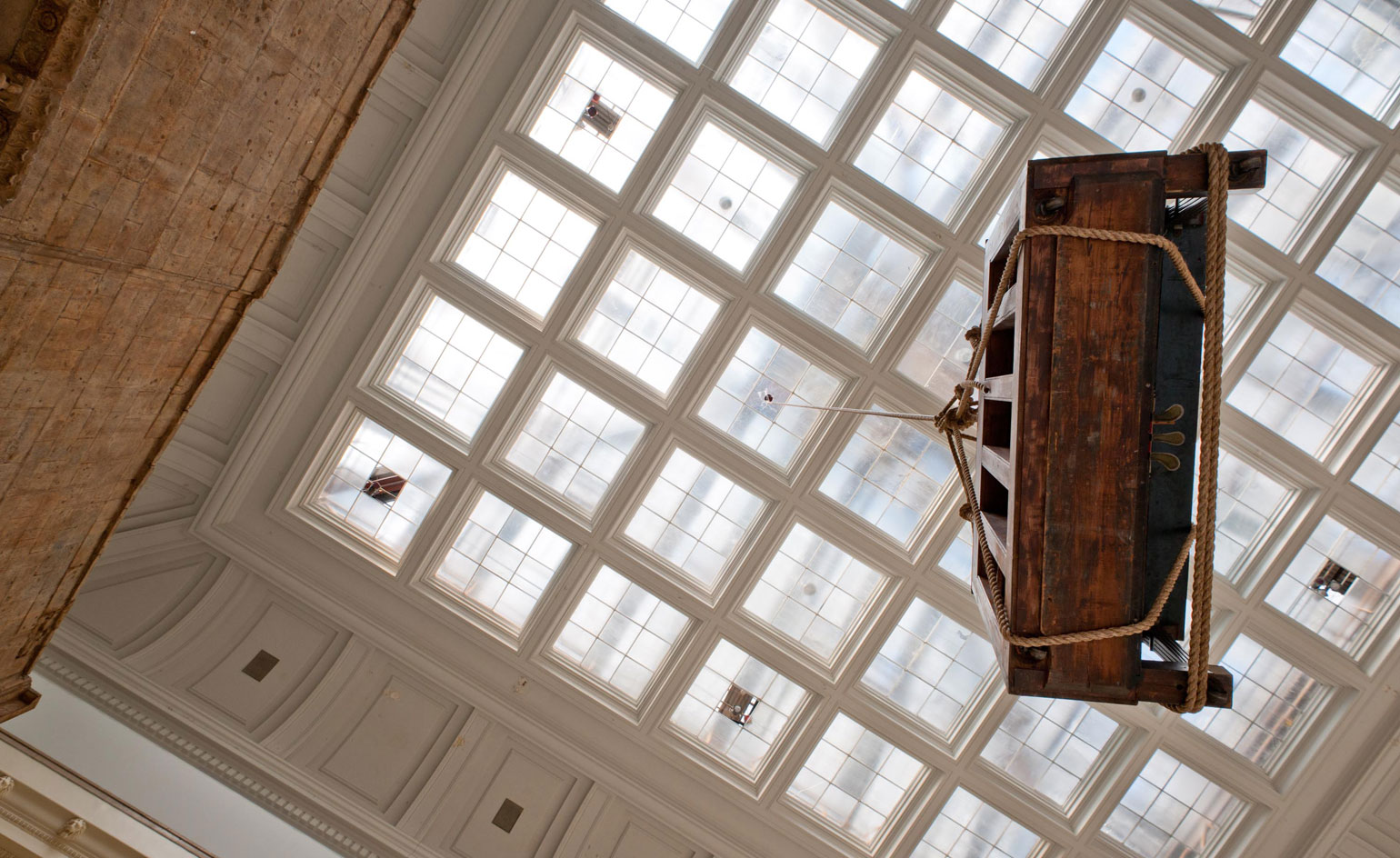
'The Piano', 2008. Originally conceived for the artist’s studio, this work has been hoisted from the ceiling of the museum’s Hall of Architecture
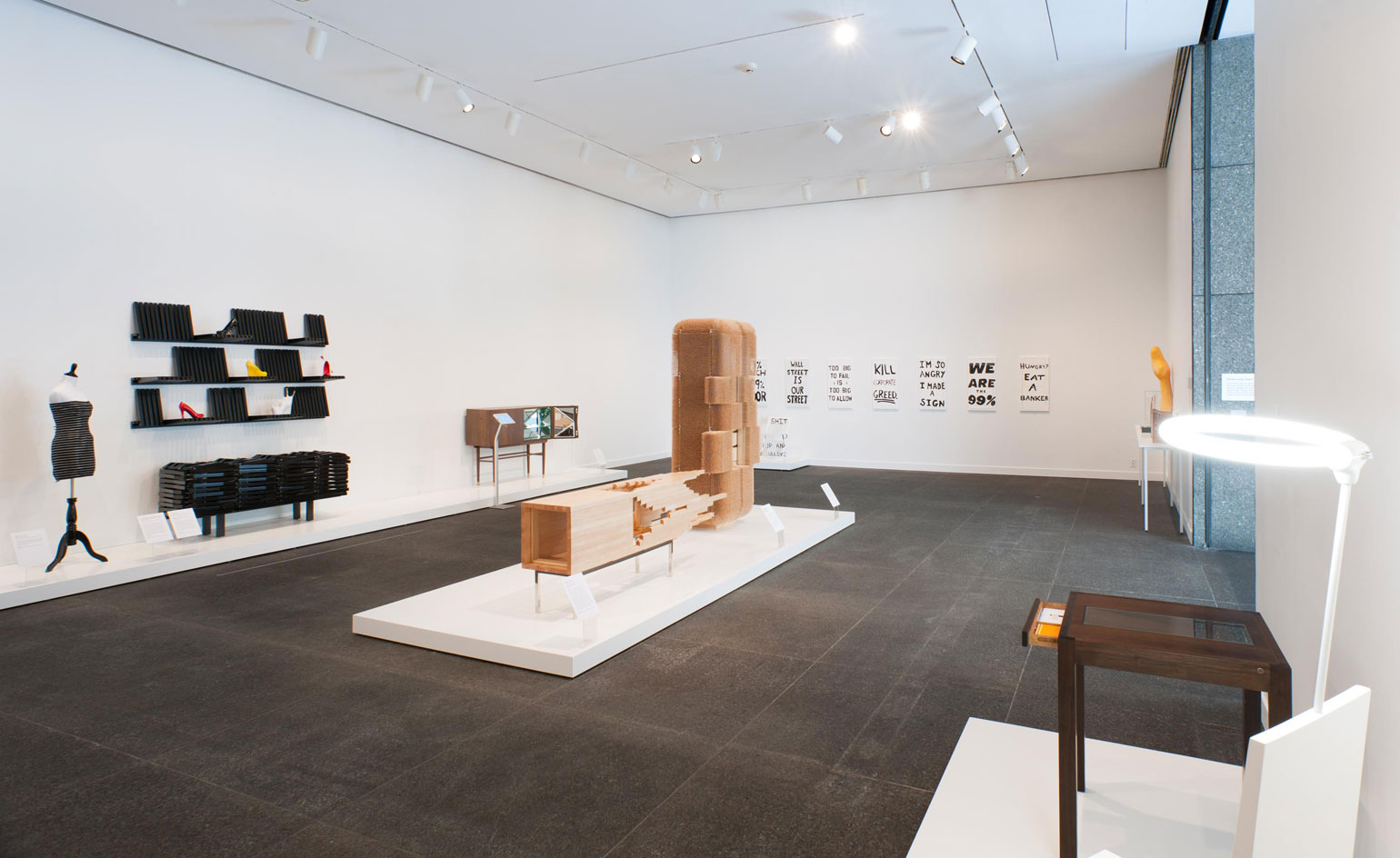
Errazuriz's playful appropriation of everyday objects encourages viewers to reconsider their preconceived notions of design and art. Pictured is an installation view of 'Sebastian Errazuriz: Look Again' at the Carnegie Museum of Art
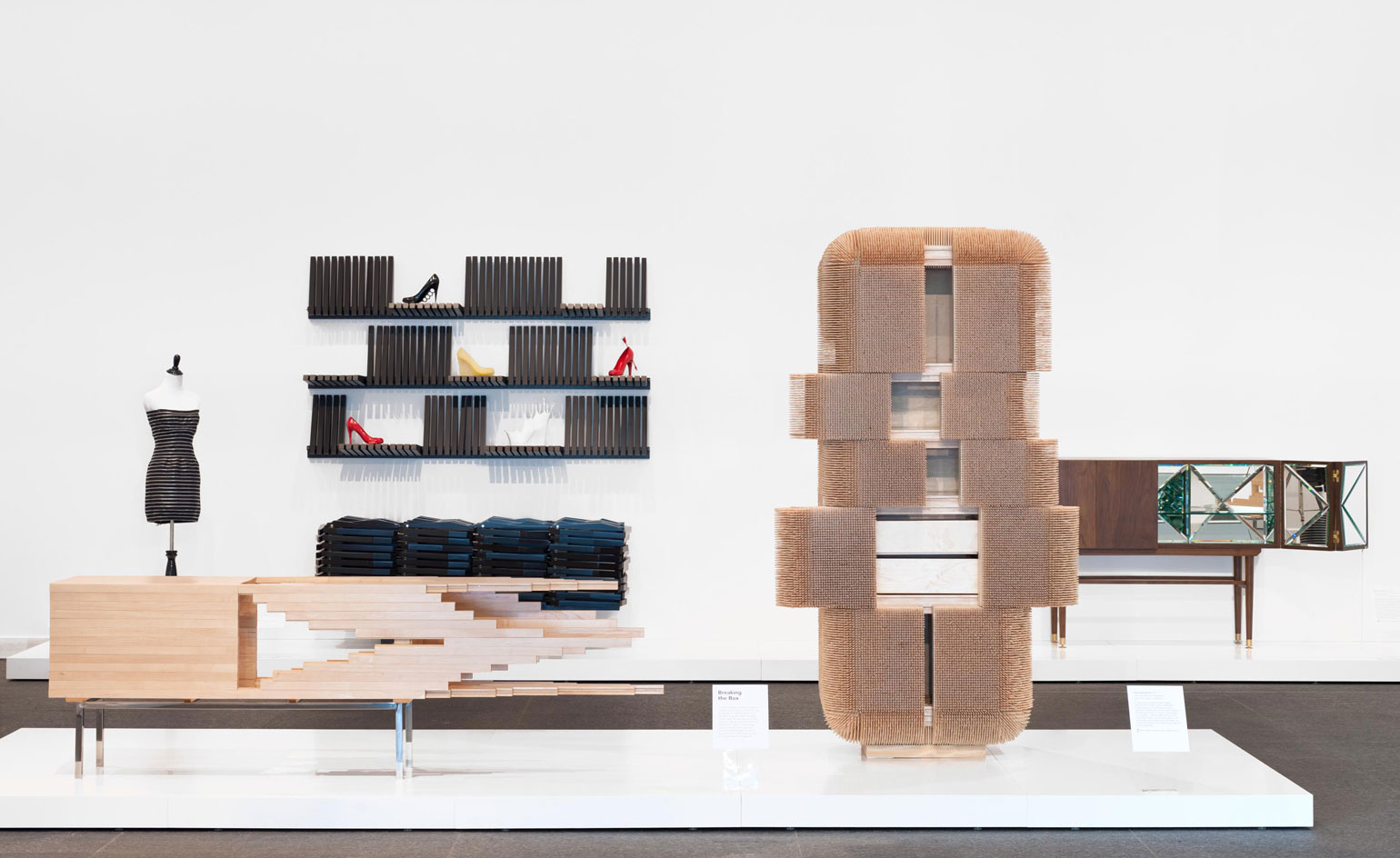
From left: 'Explosion' cabinet, 2014; 'Zipper Dress', 2003; 'Piano Shelves', 2001; 'Magistral' cabinet, 2011; and 'Kaleidoscope' cabinet, 2013
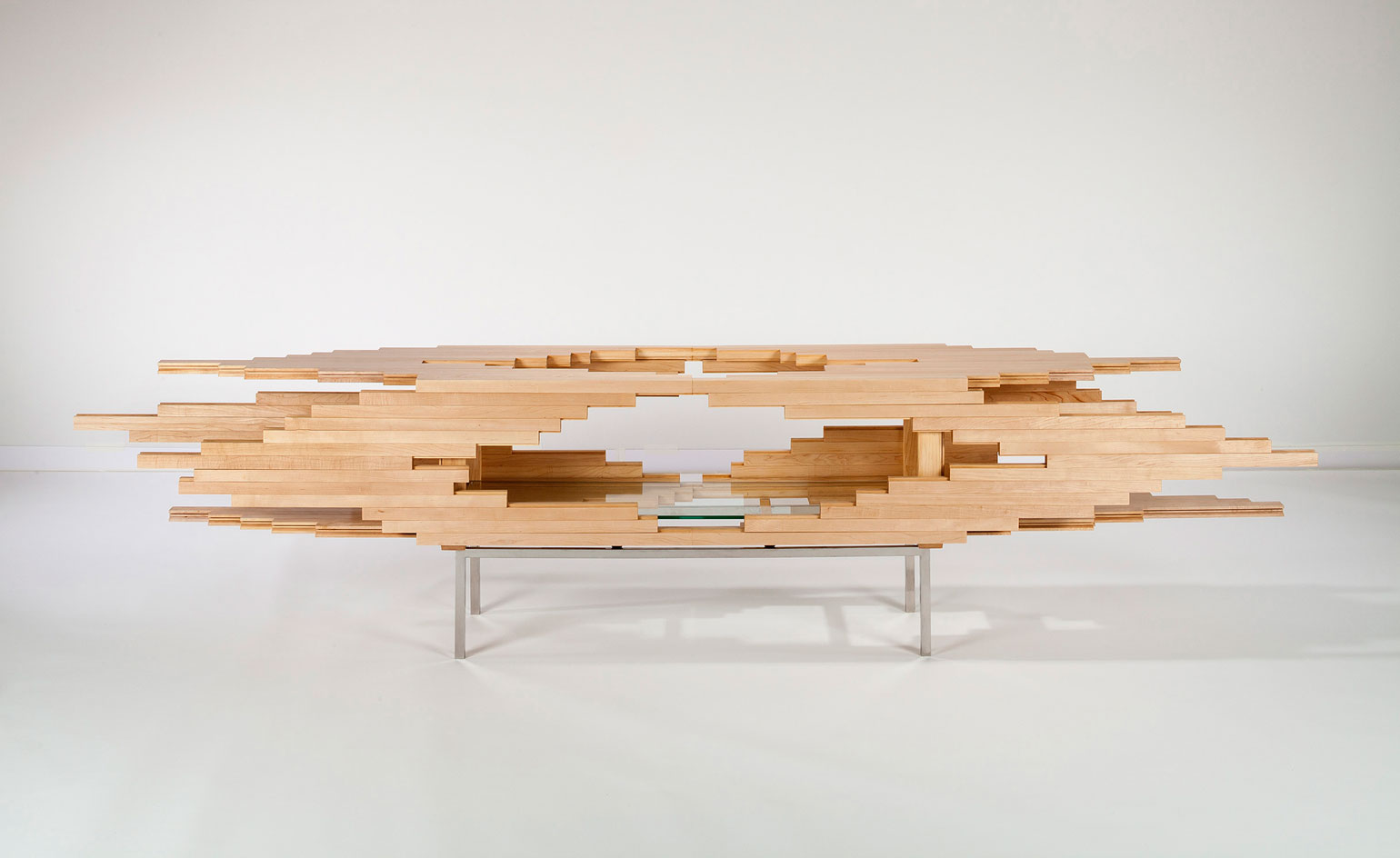
'Explosion' cabinet, 2014. The ingenuity of the design emerges as the cabinet expands to the brink of stability via sliding dovetails
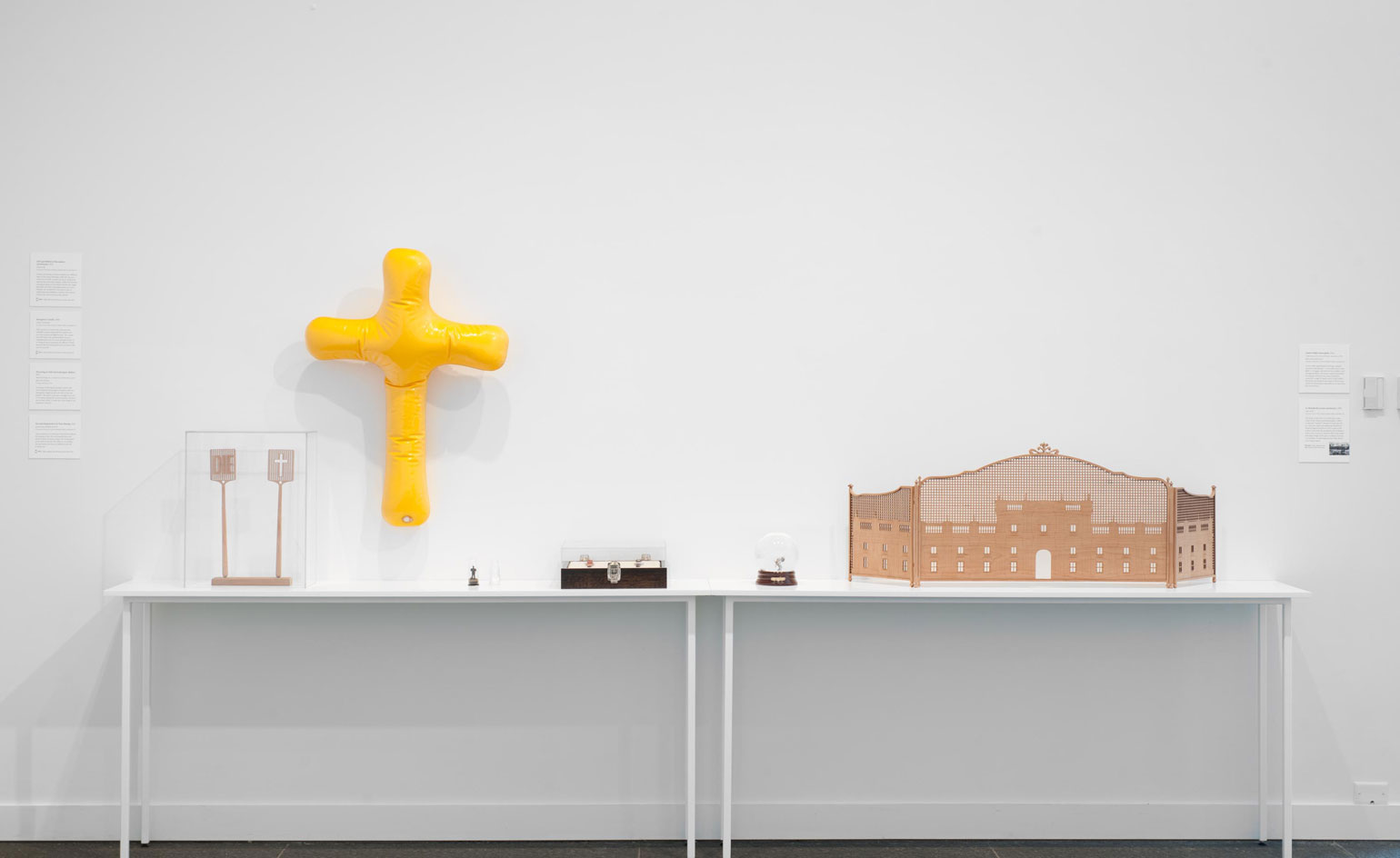
'DIE' and 'MIRACLE' flyswatters (prototypes), 2011; 'Emergency Crucifix', 2004; 'Drowning in Debt' pepper shaker, 2011; 'Lonely Soldier' snow globe, 2010; and 'La Moneda' fire screen (prototype), 2009, all on show at the Carnegie Museum of Art
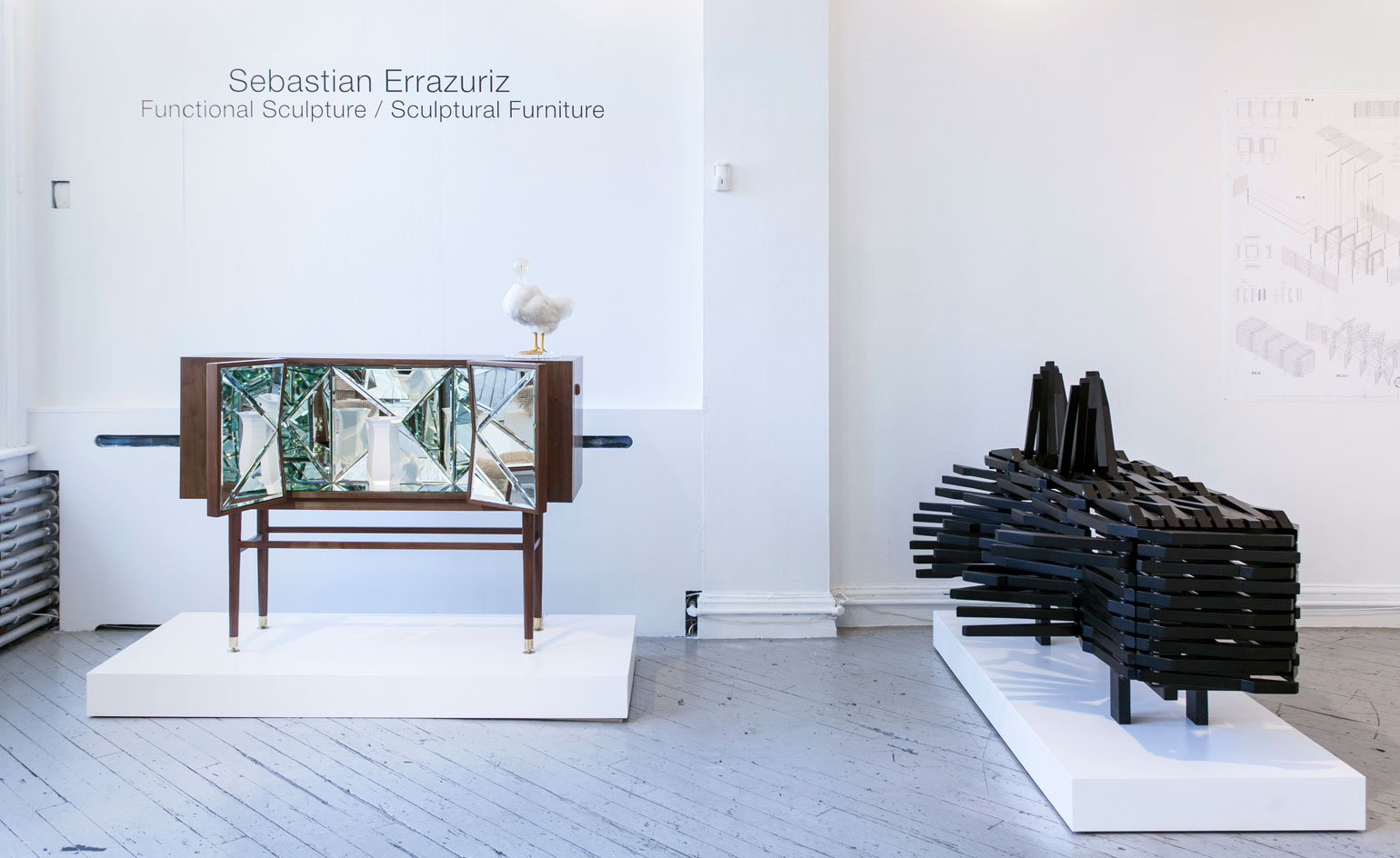
At Cristina Grajales, Errazuriz has created a group of six cabinets that transform the mundane storage object into sculpture.
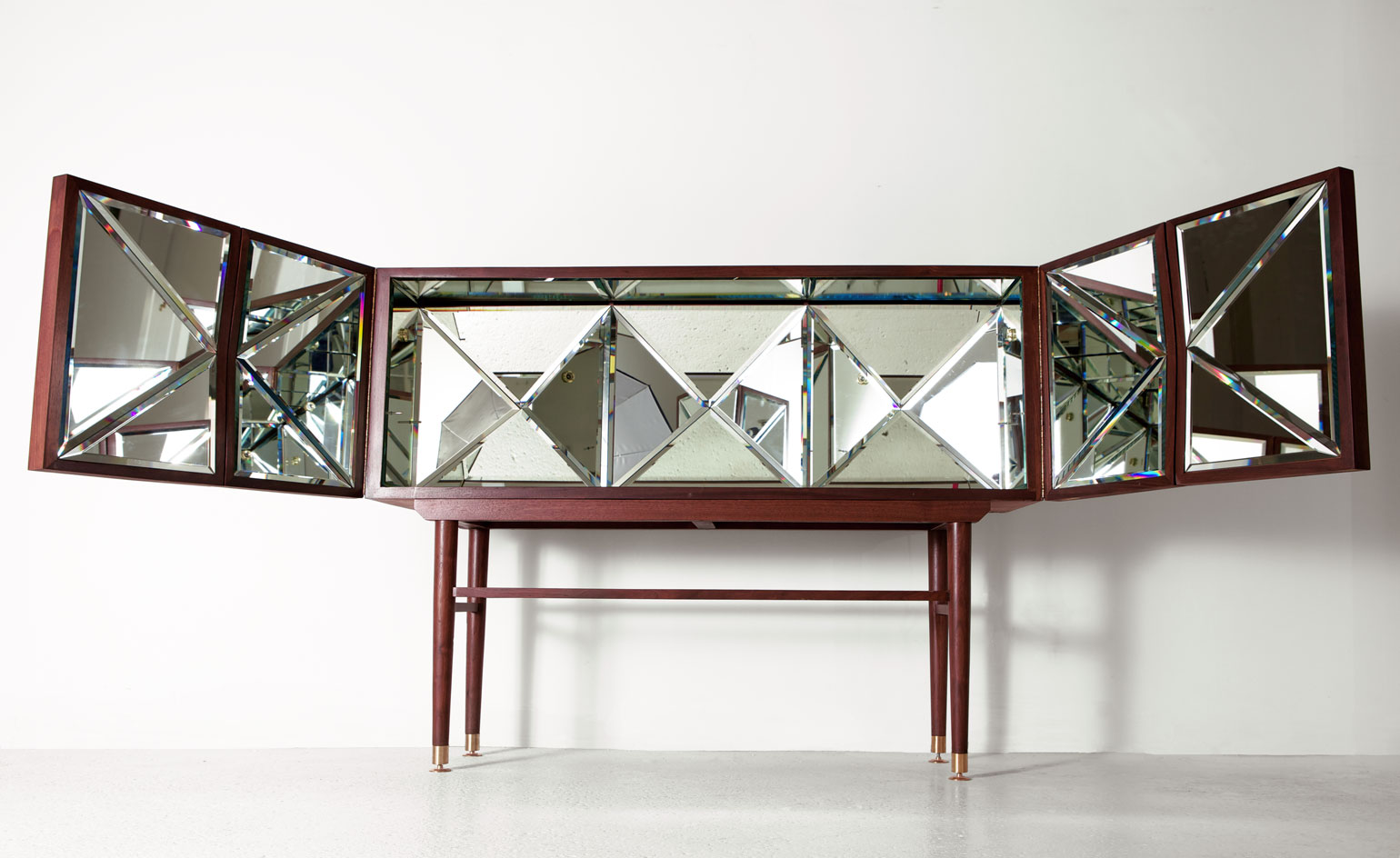
The iterations include 'Kaleidescope', a mirror-panelled piece that multiplies the contents.
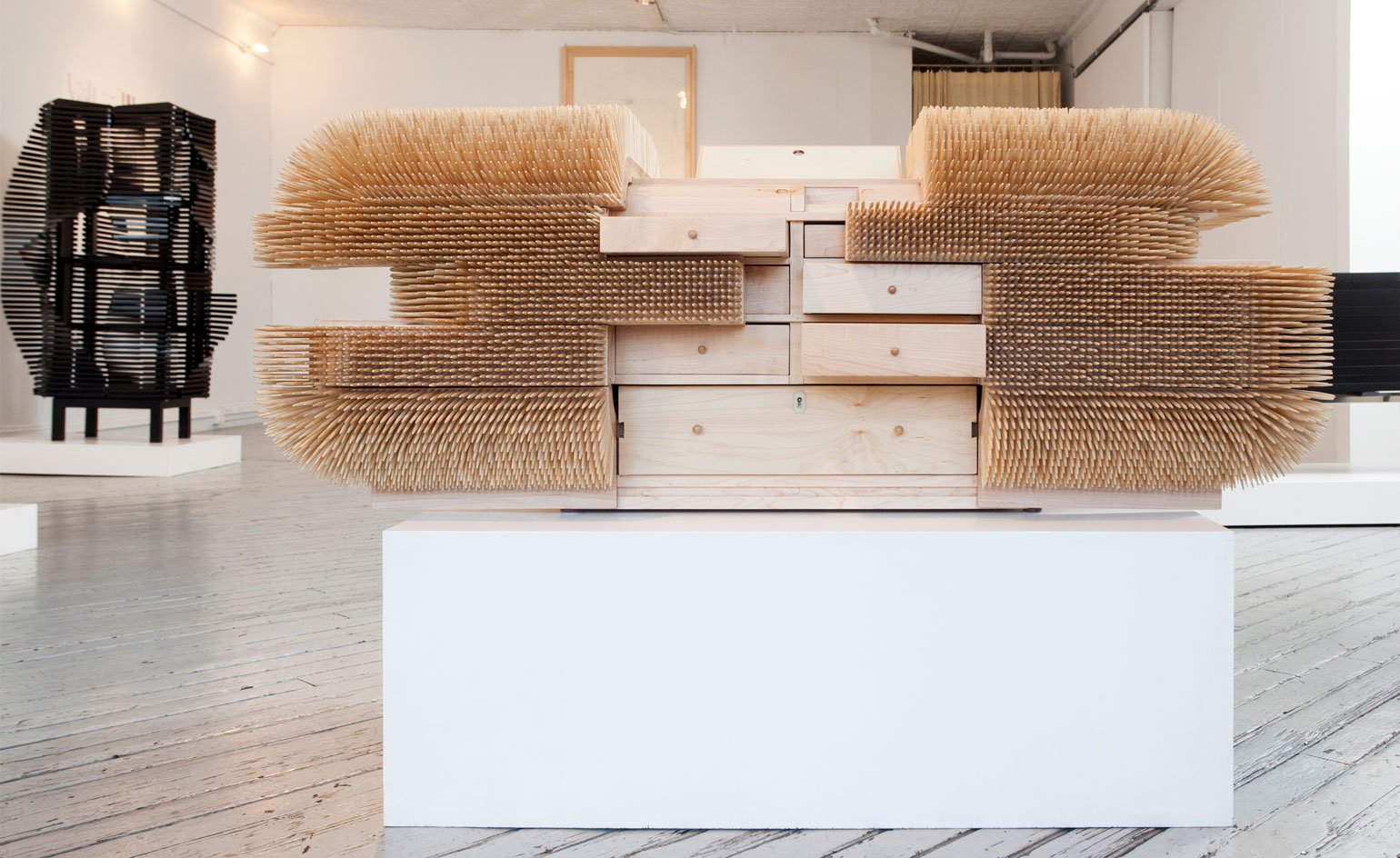
'Porcupine', meanwhile, is a unit covered in wooden quills...
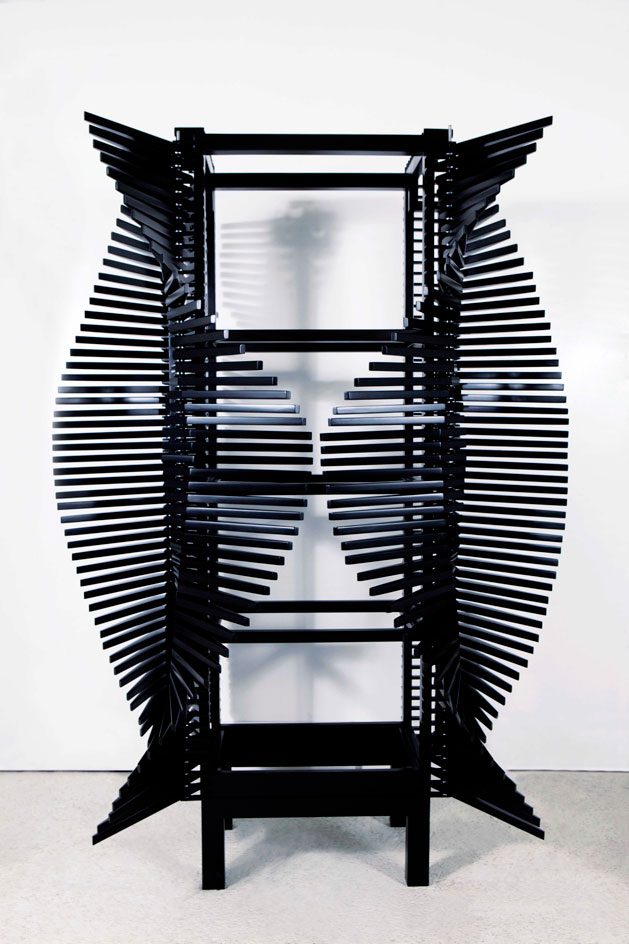
... and 'Samurai' is enclosed in woven black elastic, much like a samurai's armour.
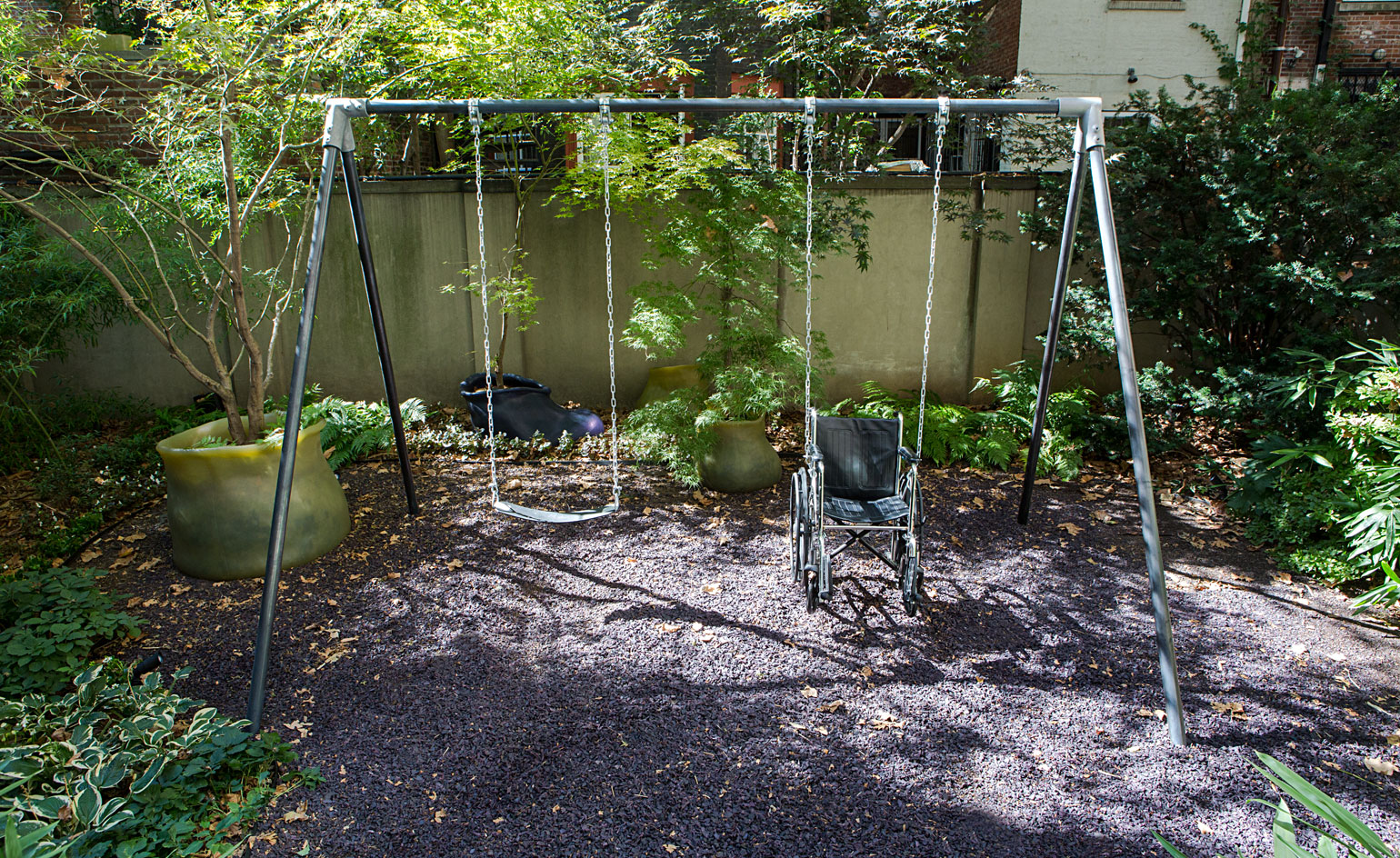
At Salon 94, on the other hand, the work references different movements or periods in art
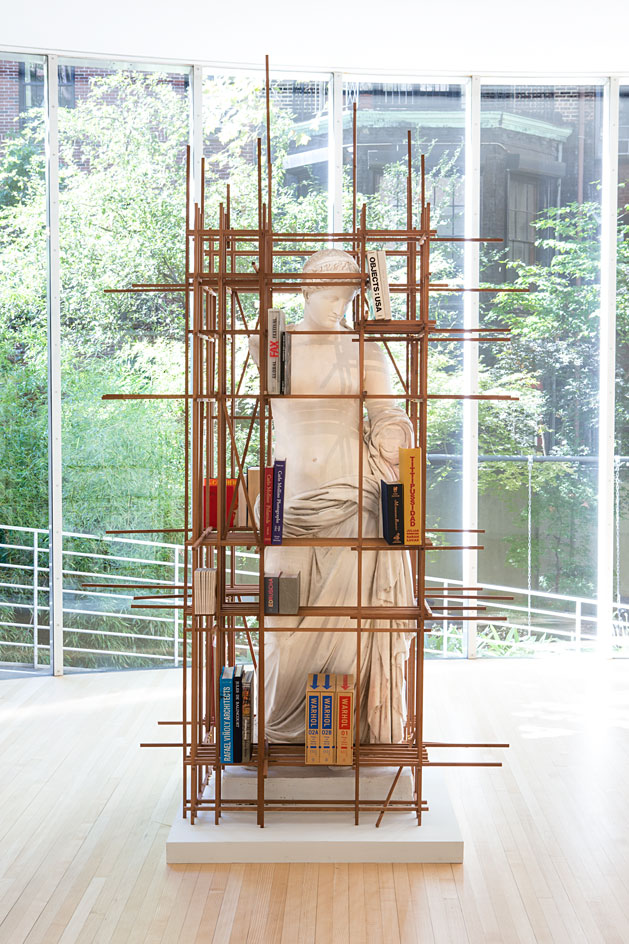
The centrepiece of the Salon 94 show is a bookcase built around a marble replica of the Venus d'Arles, a sculpture that has long been stored within the Lourve and away from public view.
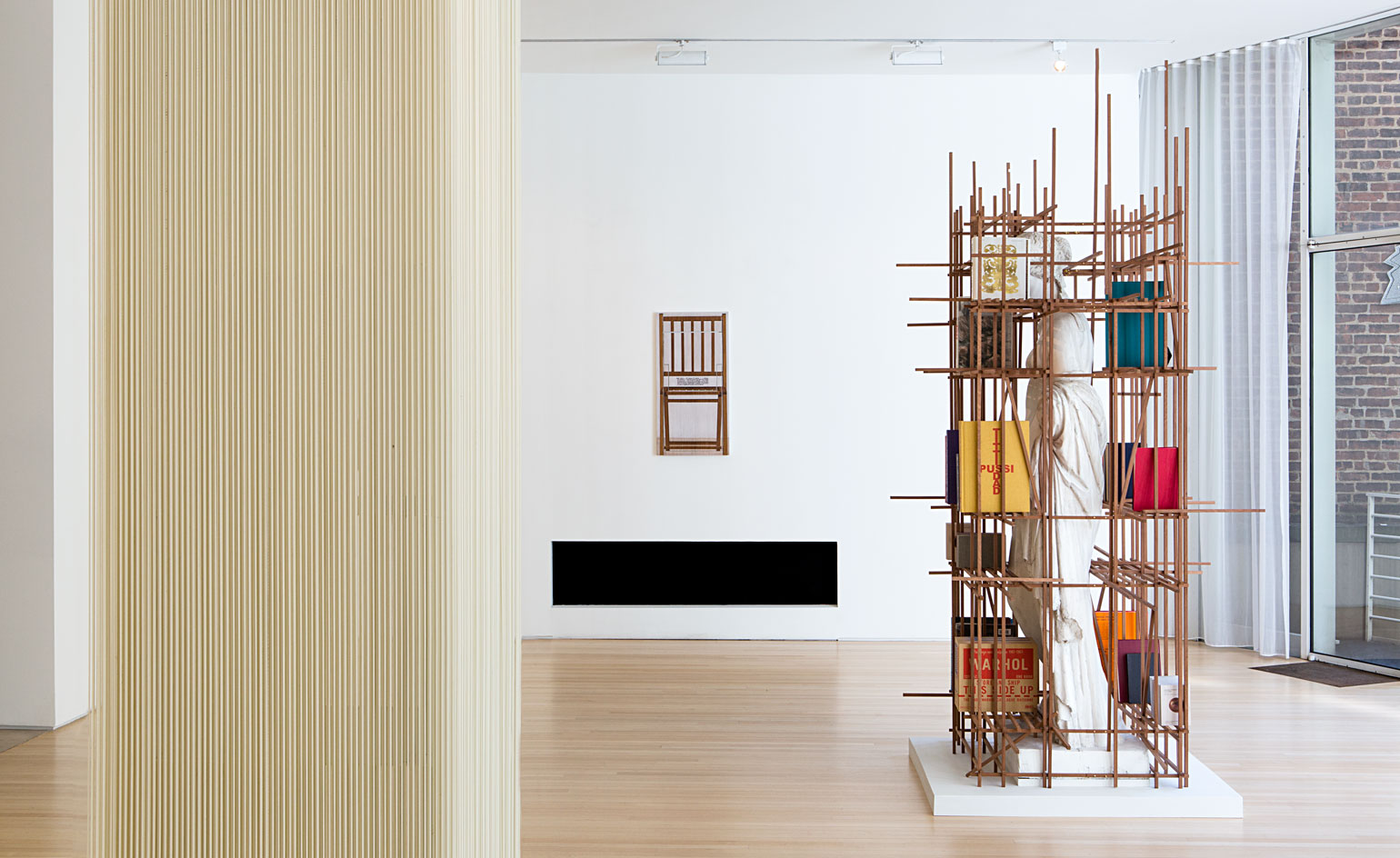
Errazuriz's scaffold-like treatment of the shelves is a jibe at the fact that most of Europe's antiquities are often seen in a state of preservation, often obstructed from view as a whole
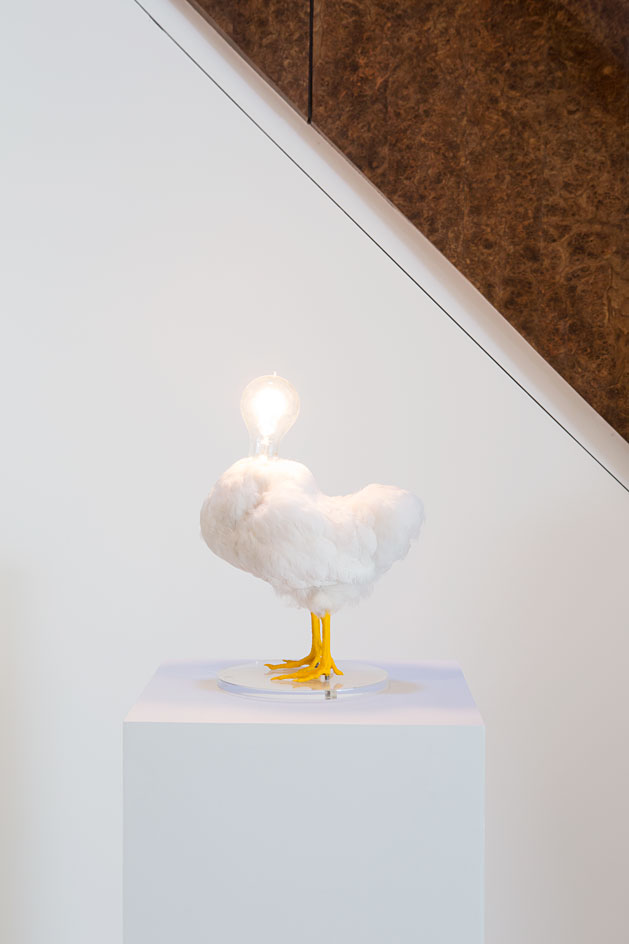
'Each of these pieces has the essence of an artwork,' says Errazuriz, 'but has been forced into functionality, thus negating its sanctity'. Pictured is 'Chicken Lamp', 2014.
ADDRESS
Salon 94
12th East 94th Street
New York
Wallpaper* Newsletter
Receive our daily digest of inspiration, escapism and design stories from around the world direct to your inbox.
4th Floor 10 Greene Street
Pei-Ru Keh is a former US Editor at Wallpaper*. Born and raised in Singapore, she has been a New Yorker since 2013. Pei-Ru held various titles at Wallpaper* between 2007 and 2023. She reports on design, tech, art, architecture, fashion, beauty and lifestyle happenings in the United States, both in print and digitally. Pei-Ru took a key role in championing diversity and representation within Wallpaper's content pillars, actively seeking out stories that reflect a wide range of perspectives. She lives in Brooklyn with her husband and two children, and is currently learning how to drive.
-
 The Subaru Forester is the definition of unpretentious automotive design
The Subaru Forester is the definition of unpretentious automotive designIt’s not exactly king of the crossovers, but the Subaru Forester e-Boxer is reliable, practical and great for keeping a low profile
By Jonathan Bell
-
 Sotheby’s is auctioning a rare Frank Lloyd Wright lamp – and it could fetch $5 million
Sotheby’s is auctioning a rare Frank Lloyd Wright lamp – and it could fetch $5 millionThe architect's ‘Double-Pedestal’ lamp, which was designed for the Dana House in 1903, is hitting the auction block 13 May at Sotheby's.
By Anna Solomon
-
 Naoto Fukasawa sparks children’s imaginations with play sculptures
Naoto Fukasawa sparks children’s imaginations with play sculpturesThe Japanese designer creates an intuitive series of bold play sculptures, designed to spark children’s desire to play without thinking
By Danielle Demetriou